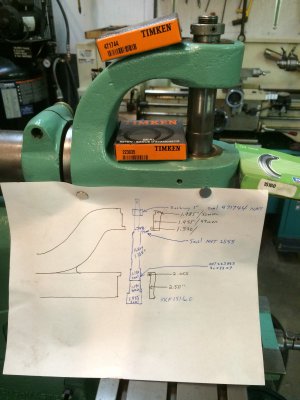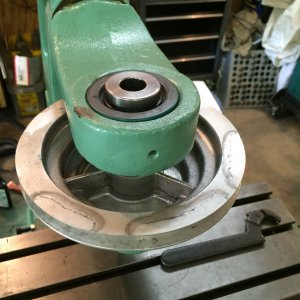- Joined
- Oct 27, 2012
- Messages
- 15
I assume you are asking about removal of the bearing races. The race ID is just smaller than the seal bore, which gives you something to press against. In this case, the OE felt seals are between the casting and the race, so you are actually pressing against the seal. You make a tool with some 1/2 all-thread. Make disk about 1/2" thick that barely slips in the outer bore, and cut a recess so it won't damage the seal. You end up with a shallow cup with a 1/2 hole in the center. Then you need a short cup for the other side that is bigger than the bore. Add two nuts for the alltread and squeeze it out.
Repeat for the other race, with different size cups. If you have a large collection of "materials" then you can probably cobble something from scrap.
Thanks AR1911 - I guessed something like this, but am more than happy to get confirmation.
mfs



